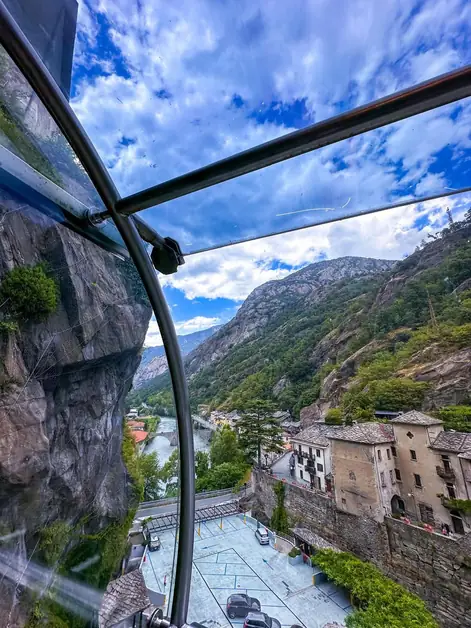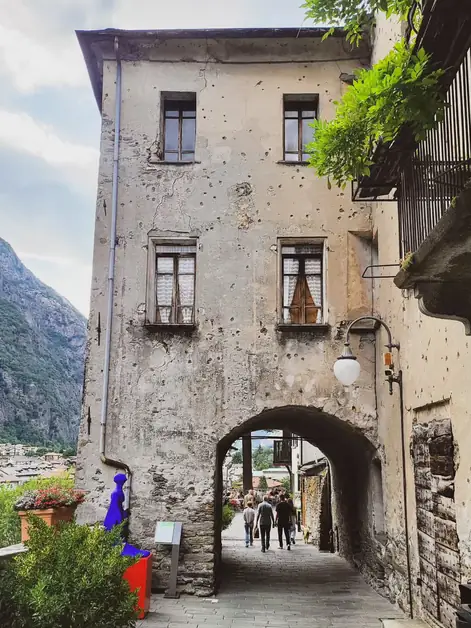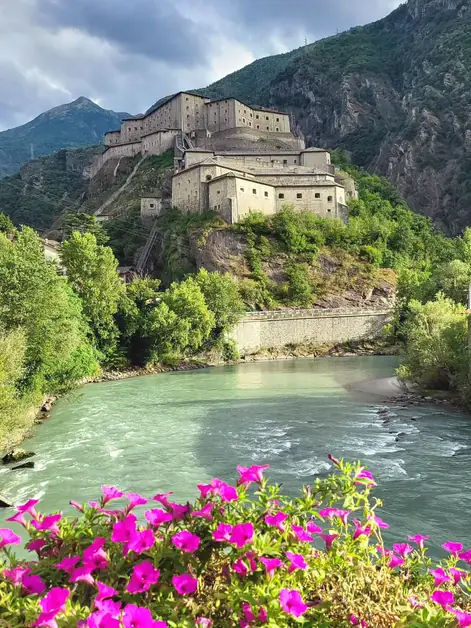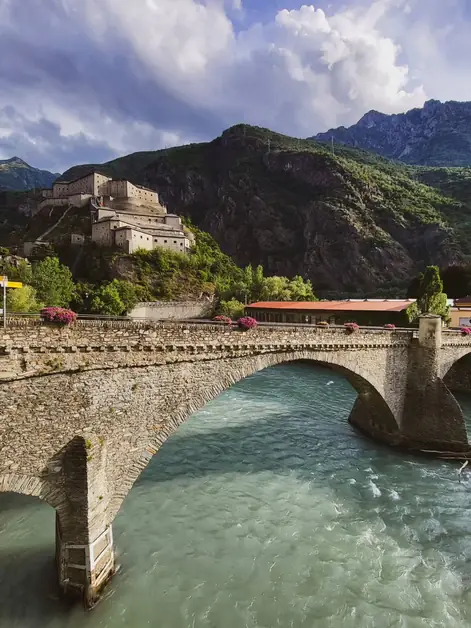Saint-Pierre Castle history and natural beauty
Saint-Pierre Castle is a symbol of the Aosta Valley, rich in history and natural beauty.
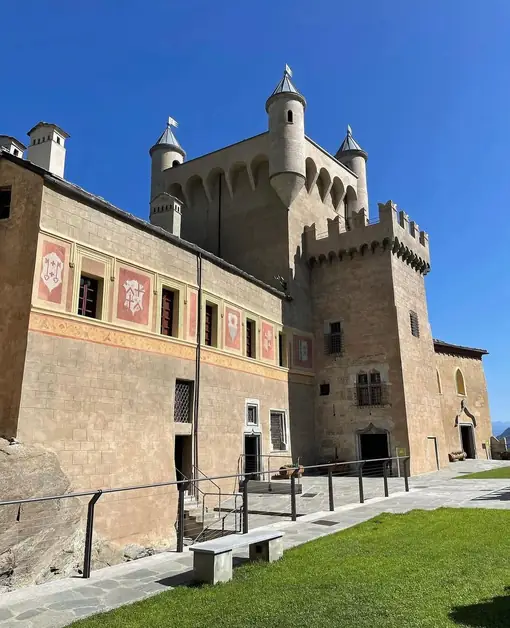
Where is Saint-Pierre Castle located?
The castle is located in the municipality of Saint-Pierre, about 7 km from Aosta, along the state road 26 leading to Courmayeur and Mont Blanc. It is perched on a rocky spur overlooking the village and the Dora Baltea, in a scenic position that makes it visible from the A5 motorway.
How to reach Saint-Pierre Castle by car?
Those traveling by car can exit at Aosta Ovest-Saint-Pierre along the A5 motorway. It only takes a few minutes to reach the village and nearby parking lots. The castle does not have a large parking area right under the entrance. It is advisable to leave the car in the municipal parking lots of the village, located near the town hall or along the main road, and continue on foot for a short uphill stretch.
Is Saint-Pierre Castle accessible by public transport?
Yes, and this is one of its conveniences. Regular buses depart from Aosta heading towards Courmayeur and La Thuile that stop in Saint-Pierre. The main stop is in the village, just a few hundred meters from the castle. Those traveling by train can arrive at the Aosta train station and then take the bus. The total travel time does not exceed 20 minutes.
What are the historical origins of Saint-Pierre Castle?
The first evidence dates back to the 12th century, when the castle was a fortification of the lords of Saint-Pierre. It later passed to various noble families, including the Sarriod and Challant, who strengthened its defensive and political function. Over the centuries, the military structure gave way to more decorative architectural transformations, until it took on its current appearance.
What architectural features make Saint-Pierre Castle special?
The four cylindrical towers with conical roofs, located at the corners of the main body, give it a fairy-tale appearance, very different from other Aosta Valley castles, which are usually more austere. This scenic choice makes it resemble a castle imagined for a postcard, so much so that it has become one of the most recognizable symbols of the region.
When was Saint-Pierre Castle restored?
By the end of the 19th century, the castle was in ruins. It was restored in a neo-Gothic style, with a project that enhanced its romantic silhouette. In the 21st century, the Aosta Valley Region carried out a new restoration, consolidating the structures and adapting it as a museum. This intervention made it possible to reopen to the public and transform it into the Regional Museum of Natural Sciences.
What can be found inside Saint-Pierre Castle today?
The castle houses naturalistic collections, including fossils, minerals, specimens of alpine fauna, and educational paths. The internal rooms combine historical elements with modern museum spaces, creating an original mix of history and science. From the windows and towers, spectacular views open up over the central valley and the surrounding peaks.
How much time is needed to visit Saint-Pierre Castle?
The museum path takes about an hour on average. Those who also wish to stroll through the village and stop nearby should consider at least half a day. The proximity to other castles like Sarriod de La Tour and Sarre allows for organizing an itinerary of multiple visits in the same day.
Are there useful services for tourists near Saint-Pierre Castle?
Yes. In the village of Saint-Pierre, there are bars, restaurants, pharmacies, ATMs, and small shops. The tourist office in Aosta, reachable in a few minutes, provides informational material about the castle as well. Those traveling without a car can rely on the bus lines that connect the village to Aosta until the evening, making it easy to organize the day.
Why is Saint-Pierre Castle a symbol of the Aosta Valley?
Because it combines three aspects: the panoramic position easily visible to anyone crossing the valley, the fairy-tale architecture that makes it unique, and its cultural role as a modern museum. It is an example of how a medieval building can be adapted without losing its connection to the surrounding landscape.
